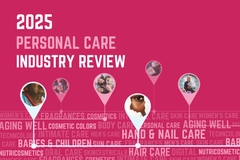Future of cosmetic enhancements is increasingly non-invasive, report finds

A report by the American Society of Plastic Surgeons (ASPS) finds that non-invasive cosmetic procedures now far outnumber surgical options, with the trend continuing to rise.
ASPS analysis finds that minimally invasive procedures grew 7% in 2023 — compared to 5% for plastic surgeries — surpassing surgical procedures by 2%. Neuromodulator injections and hyaluronic acid fillers continued to grow with more than 9 million and 5 million treatments, respectively.
The rise of non-invasive treatments is driven by more clients turning toward procedures like Botox, dermal fillers, thread lifts and laser treatments because of their efficiency, minimal recovery time and lower cost.
Offering quick and subtle enhancements, ASPS says the accessible procedures offer a more convenient and lower-risk alternative to traditional surgery. They can also address a wide range of aesthetic concerns such as fine lines, wrinkles, skin tightening and fat reduction using advanced technologies involving little to no incisions or surgery.
“While the data suggests that the drastic growth of plastic surgery during the immediate post-pandemic period has stabilized, the demand for aesthetic procedures remains comparatively robust,” says ASPS president Steven Williams.
“As patients increasingly prioritize their aesthetic health, it remains imperative that they also prioritize education and safety by seeking out board-certified plastic surgeons. This becomes even more important as patients increasingly try to differentiate quality care and truth among the messages they receive in social media and paid advertisements.”
Emerging trends in non-invasive procedures
The landscape of non-invasive treatments is evolving rapidly, driven by technological advances and growing consumer interest.
In addition to botox and dermal fillers, high-demand procedures include laser skin resurfacing, microneedling with radiofrequency and chemical peels.
Patients are also CoolSculpting — using cryolipolysis to freeze and eliminate fat cells in specific areas — as well as Ultherapy, which focuses on lifting and tightening the skin around the face, neck and decolletage using ultrasound energy to deeply stimulate collagen production.
Looking further at technological advances in the sector this year, Personal Care Insights previously reported on US-based InMode’s additional FDA 510(k) clearance for its Morpheus8 technology — the “first and only” fractional radiofrequency microneedling technology for contraction of soft tissue.
Top minimally invasive procedures
Of the nearly 25.4 million cosmetic minimally invasive procedures performed in 2023, neuromodulator injections (such as Botox, Dysport, Xeomin, Jeuveau and Daxxify) were listed at the top, with 9,480,949 procedures, up 9% from 2022.
In second place, hyaluronic acid fillers were performed in 5,294,603 procedures, up 8% from 2022. Skin resurfacing (such as dermabrasion, chemical peel, ablative/non-ablative lasers and microdermabrasion) saw 3,501,696 procedures, up 5% from 2022.
In third, skin treatment (such as laser hair removal, intense pulsed light treatment, laser tattoo removal, laser treatment of leg veins): 3,101,772 procedures, up 6% from 2022. This was followed by lip augmentation (with injectable materials), performed in 1,439,291 procedures, up 4% from 2022.












